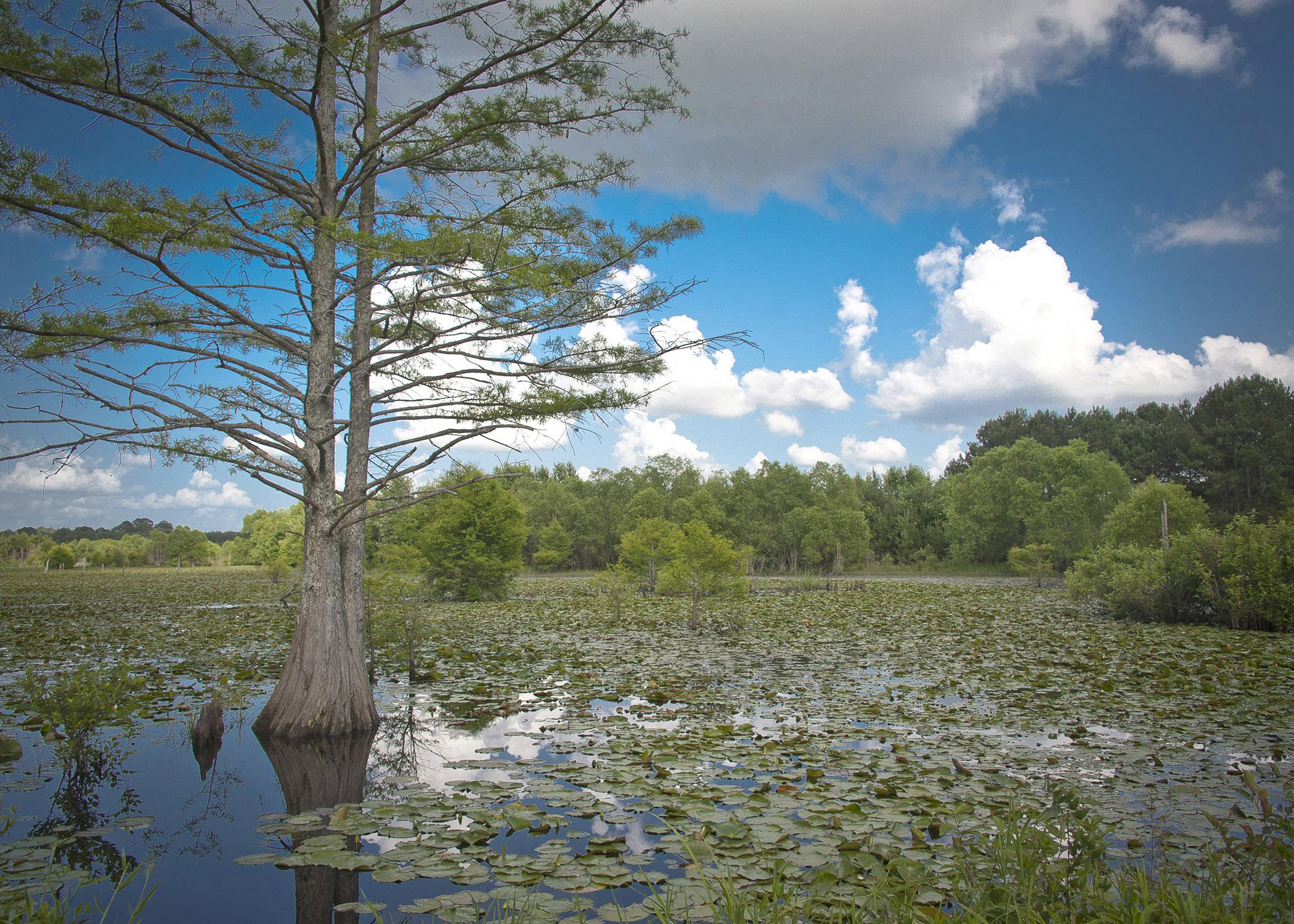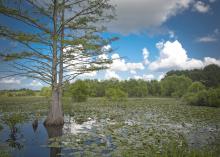Information Possibly Outdated
The information presented on this page was originally released on July 11, 2014. It may not be outdated, but please search our site for more current information. If you plan to quote or reference this information in a publication, please check with the Extension specialist or author before proceeding.
Will the weeds in my pond hurt my fish?
MISSISSIPPI STATE -- A common question in all county Extension offices this time of the year is, “Will the weeds in my pond hurt my fish?” As the water in ponds warms up, the vegetation starts growing.
Is vegetation growing in a pond a problem for the fish? Not necessarily.
In most cases, pond vegetation is good for the fish. Those green plants produce oxygen as a byproduct of photosynthesis. They also serve as a place for insects and small fish to hide from predators. Alternately, they provide a place for predators to hide and ambush their food, namely small fish and insects. Pond vegetation is very much a part of the food chain and oxygen cycle in a pond or lake.
However, if you can’t reach the bank of a pond because the weeds are so thick, that is a problem. If the vegetation is so thick a fisherman can’t cast a hook into the water and retrieve it without reeling in a pound or two of “mess,” the weeds are a problem. If the vegetation cover on a pond is so dense that sunlight cannot penetrate the water and dissolved oxygen levels drop too much, then that is a problem for the fish and other organisms in that pond. Remember, a weed is simply a plant growing where it’s not wanted.
If the plants in your pond or lake are a problem, there are steps you can take.
First, properly identify the plant before deciding on a course of action. You can take a sample -- preferably fresh, with leaves and roots intact -- to your county Extension office. In most cases, they will be able to identify it.
Once the plant is identified, you can determine a plan to control it. Control methods include mechanical, biological, environmental and chemical.
Examples of mechanical control are raking, chopping or pulling the plants to remove them. This is often the most labor-intensive option, but it does not require the use of chemicals and is often effective immediately.
Biological control involves the introduction of another organism that will eat or harm the targeted plant. A common example is the triploid grass carp, also known as white amur. One drawback to using grass carp for control is that they must be removed and replaced by smaller carp once they mature. Large, mature carp do not consume as much vegetation as younger, smaller carp.
Environmental control is more passive and requires the pond owner to wait until the weather is cooler. A common practice called winter drawdown involves reducing the pond’s water level in the winter and allowing the remaining water to freeze. The intent is to kill the plants at the bottom of the pond.
The last control practice, and one you should use only if necessary, is chemical control. This is when an herbicide is applied to control the identified vegetation. This control must be done carefully and according to all label instructions.
I am often asked if a particular chemical will hurt the fish in the pond. It should not, if used according to the label instructions. This includes the amount of chemical to apply, the application rate, the time of the year and the water temperature when it is applied. All of these factors influence the chemical’s effect on the fish as well as the chemical’s success at controlling the targeted vegetation.
If you have a pond and you’re concerned about weeds, remember you are not alone. Contact your Mississippi State University county Extension office to speak to a knowledgeable Extension agent. His or her job is to help you solve your problem.

Editor’s Note: Extension Outdoors is a column authored by several different experts in the Mississippi State University Extension Service.




